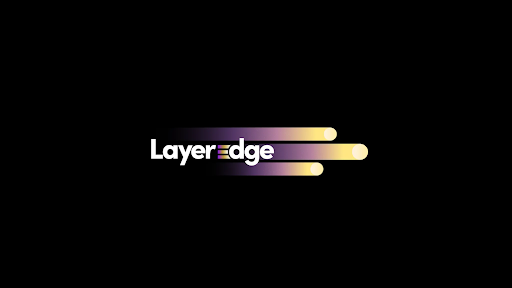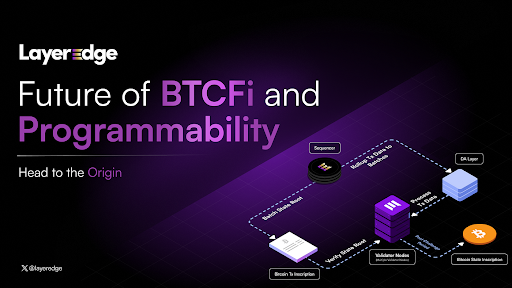Singapore, 16th May 2024, ZEX PR WIRE, Bitcoin came into existence to overcome the fundamental flaws in the trust-based architecture and create an ecosystem based on cryptographic proof. Although Bitcoin’s ethos emphasizes its use cases as a peer-to-peer commodity for a trustless ecosystem, it lacks programmability — limiting its adoption for decentralized financial utilities. Ethereum, on the other hand, boosted the adoption with on-chain programmability enabling a trustless ecosystem.

Post Bitcoin’s Taproot upgrade, the ecosystem has seen significant development around the Bitcoin L2’s — providing a scalable and cost-efficient channel for developers and users to engage without paying high gas fees, and allowing to tap into high liquidity. This solidifies the notion that BTCFi isn’t just a fluke, but can truly drive adoption.
Even though Bitcoin L2 fixes the programmability problem, enabling a trustless setup and smooth flow of liquidity — security and adoption remains a major concern.
Introducing LayerEdge, a Programmability Layer inheriting Bitcoin’s native security for network operations, allowing for faster and cheaper network operations with Optimistic Rollups while providing an EVM friendly developer environment — amplifying the use of Bitcoin’s native assets like conventional commodities.
With LayerEdge, unlock the true potential while still being aligned to Bitcoin’s ethos of a secure and trustless financial system.

Head to the Origin — LayerEdge
LayerEdge, a Programmability Layer for the Bitcoin Ecosystem enables faster and cheaper network operations while leveraging Bitcoin’s native security — amplying DeFi applications for Bitcoin native across a wider network with EVM compatibility. To top it off, our Hybrid Modular DA enables native verification of data on the Bitcoin network.
With LayerEdge, reimagine the Bitcoin ecosystem with boosted utilities, native security, and programmability.
Natively Secure
LayerEdge leverages Bitcoin’s native infrastructure and bundles the transaction on top of it, providing one of the most secure systems. Presently, POS chains rely on developing their own validators internally. While on the other hand, LayerEdge acts as an execution layer, utilizing Bitcoin for settlement.
Near-Zero Gas Fees
LayerEdge utilizes optimistic rollup, enabling us to operate the network even with just one honest validator. This approach enables LayerEdge to achieve nearly zero gas fees, all while maintaining security level similar to Bitcoin’s Native Security.
Programmability — EVM Compatible
With EVM compatible, LayerEdge offers programmability and smooth user experience to boost developer adoption — allowing projects to tap into liquidity and enable utility for Bitcoin’s Native Assets.
LayerEdge deBridge — Trust-minimised Bridge for Bitcoin & Inscriptions
LayerEdge’s deBridge allows users to bridge their native assets from Bitcoin to LayerEdge ecosystem securely without having the funds to be stored with any single entity.
This opens up a utility layer for vaster adoption of Bitcoin’s Native Assets and Inscriptions like Runes — enabling yield generation and use case across the DeFi ecosystem.
Under the hood
LayerEdge employs a federated multi-party computation (MPC) approach to manage the key used for validating bridging requests, ensuring no single entity controls the critical signing key. The MPC key is generated through a secure ceremony involving multiple relayer agents, with the key never assembled entirely in one place, preventing single points of failure.
Rather than relying on multi-sig or other traditional methods, LayerEdge’s relayers participate in the MPC ceremony for each bridging event, enabling distributed computation on secret inputs without revealing outputs. LayerEdge’s federated MPC system distributes control of the signing key, bolstering the integrity of the bridge and providing a secure foundation for cross-chain transactions and data transfers.
LayerEdge’s Hybrid Modular DA
Bitcoin is inherently designed to carry out transactions, not for data storage. Attempting to use Bitcoin as a DA solution would lead to high fees and slower confirmation times due to limited block space. This approach is impractical for rollups and creates a bottleneck in delivering a satisfactory user experience.
Thus, the necessity arises for a DA capable of interfacing with Bitcoin, and existing DAs meet this need — saving time and effort. LayerEdge enables integration with these DAs, establishing a connectivity layer with the Bitcoin network.
With LayerEdge’s Hybrid Modular DA, any existing DA can function as a Bitcoin DA, enabling modularity. This means that any Bitcoin Layer 2 rollup network can then utilize Bitcoin’s security features.
Under the hood
The Hybrid DA stores block data on existing Data Availability (DA) Layers and posts its state proof on Bitcoin. This functions as a reliable verification mechanism, as the state proof acts as a cryptographic commitment to the entire block data.
By posting the state proof to Bitcoin, the robust security and decentralization of Bitcoin can be leveraged to provide a trustless means of verifying the integrity of the data stored on the DA Layer.
LayerEdge’s Hybrid DA Layer approach significantly reduces block time and increases finality. While Bitcoin has a 10-minute block time, layerEdge’s Hybrid DA aims for a 12–20 second block time — making it 100x faster. This rapid finality provides –
1) Efficiency: Faster block times allow the network to process transactions and execute smart contracts more efficiently, improving the overall user experience.
2) Responsiveness: The quick finality enables more responsive and interactive applications to be built on top of the blockchain, as users don’t have to wait as long for their transactions to be confirmed.
3) Scalability: The faster block times help alleviate some of the scalability challenges faced by Bitcoin, as more transactions can be processed per unit of time.
Future of BTCFi with LayerEdge
The Origin
The Origin stage will focus on deploying LayerEdge’s EVM-compatible Testnet, along with the Testnet EVM Bridge and LayerEdge’s Hybrid Modular DA Testnet.
The Block
The Block stage will focus on deployment and mainnet launch, introducing the Hybrid Modular DA and native Bridge. This allows users to bridge their native assets from Bitcoin, EVM, and various non-EVM ecosystems.
LayerEdge is also building in collaboration, an MPC-based bridge for Bitcoin — enabling a secure and seamless bridge for native assets like BTC, Inscriptions, BRC20, Runes, and more with multiple trusted Relayers, with MPC key not being generated at entirety at any single place, with recognized various third-party audits.
The Sequencer
The Sequencer upgrade will facilitate final settlement on the Bitcoin network by migrating sequencers to the Bitcoin network. While more details and updates await, and will be revealed with future announcements.
Conclusion
LayerEdge marks the inception of a hyper-secure and one of the most efficient infrastructures for Bitcoin leveraging optimistic stack and hybrid modular DA approach — enabling trustless verification and rapid transaction finality.
Website | Documentation | Testnet Explorer | Twitter | Medium | Discord | Telegram
Disclaimer: The views, suggestions, and opinions expressed here are the sole responsibility of the experts. No Economymono journalist was involved in the writing and production of this article.
